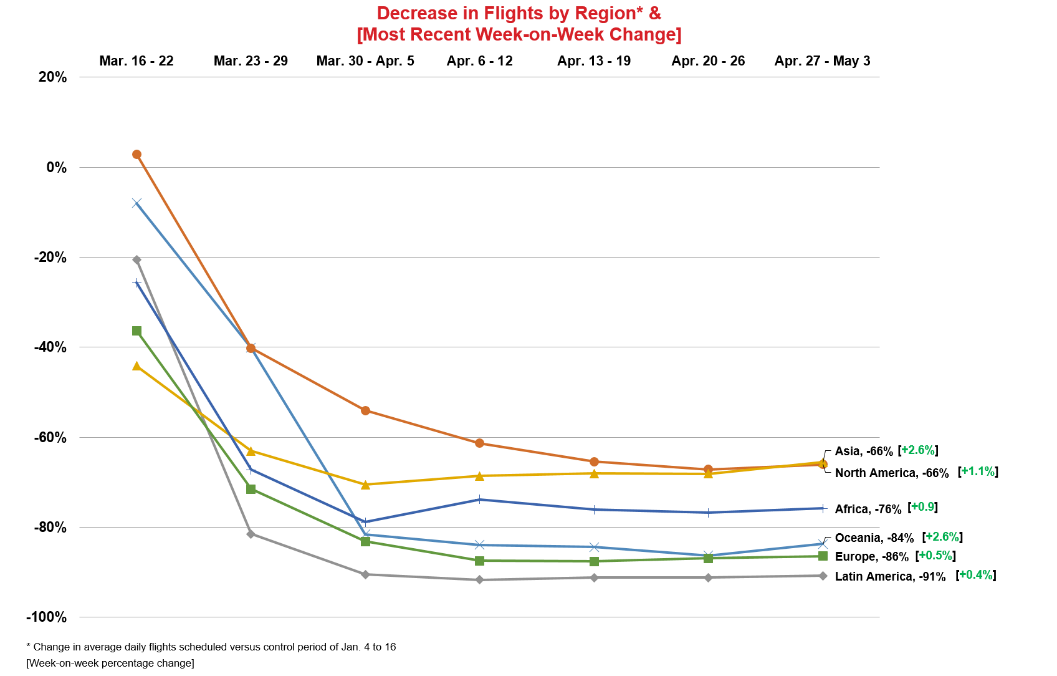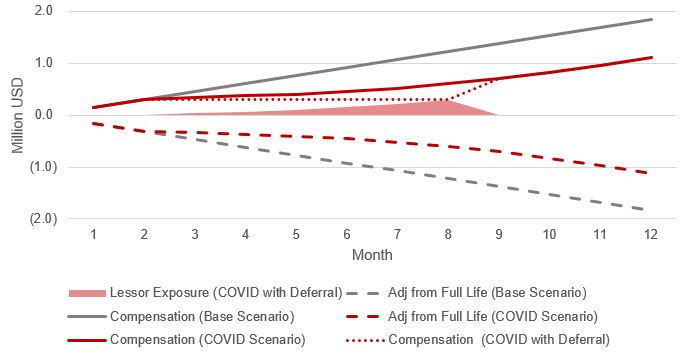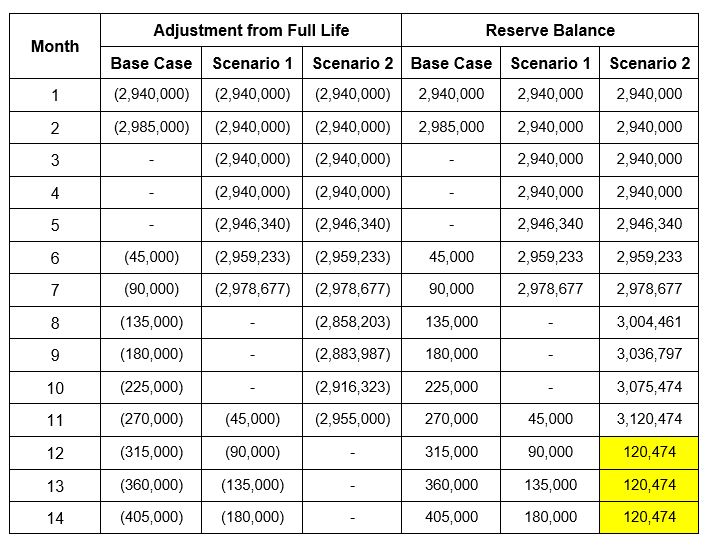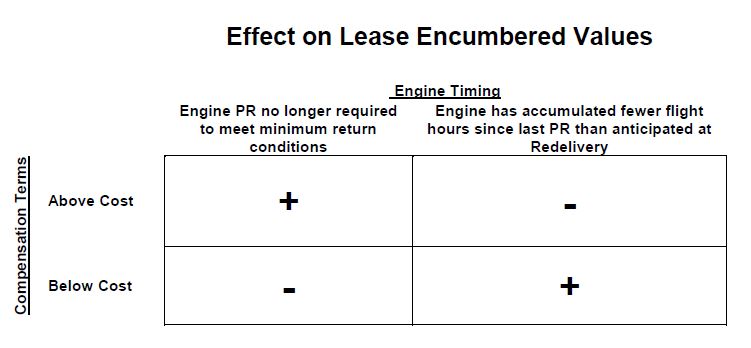In this edition of mba Aviation’s Insight Series, Natasha Sidhu and Steven Harokopus of the Forecasting & Modeling group examine the effects of grounding related to COVID-19 on Aircraft Maintenance cash flow for lessors.
Key Concepts:
- In general, maintenance compensation increases at near to the same rate as maintenance condition decreases, so when this is the case, a significant decrease in utilization will not have a significant negative impact on the maintenance cash flow portion of an ABS, barring bankruptcies and renegotiation of lease terms.
- Leases with compensation significantly above or below cost should be re-forecasted to see if engine condition is now expected to be significantly higher or lower than previously forecasted.
Ups and Downs in the 2019 Air Cargo Market – Part I
At least nine-tenths of the global population live in countries with travel restrictions due to the COVID-19 pandemic.[1] These restrictions have driven airlines to ground the majority of their fleet, causing a significant short-term reduction in utilization. As of April 13, 2020, mba records 11,606[2] aircraft grounded. Aircraft lessors typically collect supplemental rent tied to the asset’s utilization in the form of maintenance reserves. Aviation investors will see a reduction in liquidity related to maintenance reserve cash flows, in addition to liquidity reduction due to payment deferrals.
The impact of COVID-19 has been compared to the 2003 SARS epidemic when revenue passenger kilometers (RPKs) for the Asia-Pacific region and the Chinese domestic market bottomed out three months after the start of the outbreak followed by a recovery period before traffic returned to normal levels after six months. However, the slowdown of growth resulting from the COVID-19 pandemic is expected to last much longer and affect all regions. IATA has reported that worldwide flights are down almost 80% by early April, the industry has been virtually grounded outside of the US and Asia domestic markets.

[1] More Than Nine-in-ten People Worldwide Live in Countries with Travel Restrictions Amid Covid-19 Phillip Connor – https://www.pewresearch.org
[2] REDBOOK, mba Analysis
The global groundings have resulted in a sharp decline in revenue and cash flow for airlines. Aircraft lessors are negotiating with their lessees on rent deferrals and lease terms to bridge this period of uncertainty. However, if airlines are unable to operate for an extended period of time, they face an increased risk of insolvency. Should that occur, aircraft lessors would need to recover, remarket, and possibly perform costly maintenance to their aircraft.
How does a decrease in utilization affect forecasted maintenance values and cash flow?
Most maintenance events will be pushed to the future
A prolonged decrease in utilization will push utilization-driven maintenance events into the future. As per the breakdown in Maintenance Matters I, utilization-driven maintenance events account for the significant majority of maintenance costs and values. Based on aggregated data from recent short-term maintenance cash flow forecasts, calendar-driven maintenance accounts for ~15.0% of maintenance outflows. Only airframe Heavy Checks and, generally, landing gear overhauls, are calendar driven. Unless the aircraft is placed in a long-term storage program, their date of next events will not be pushed forward for calendar-driven events. However, these events cost significantly less than engine overhauls and engine Life Limited part stack replacements. If a lessee defers maintenance payments and is not utilizing the aircraft, then the increase in lessor exposure is only from the calendar-driven events.

There is a potential benefit for lessors in situations where airlines are reaching to reduce cash outflows by as much as possible. If maintenance is compensated at the expected event costs, but major shop visits are held off by minor repairs, maintenance compensation accounts could exceed the cost of the maintenance events at time of redelivery, and in most lease agreements, the lessor would keep this excess.
For example, take an engine with a planned overhaul interval of 20,000 Flight Hours and an expected overhaul cost of $3 million, with compensation negotiated to be $150 per flight hour, so that when an overhaul is performed, the reserve bucket equals the cost. Let’s model a base case normal utilization for this engine, a Scenario 1, where there is decreased utilization due to COVID-19, and a Scenario 2, where there is decreased utilization and non-qualifying engine repair is used to extend the life of the engine another 1000 Flight Hours.

The Maintenance Value of Leases with Compensation varying significantly from cost could change significantly
In a situation where the supplemental maintenance rent matches the cost of maintenance, a utilization decrease will slow the decrease of the asset’s maintenance adjusted value. Similarly, an increase in utilization will lower the asset’s maintenance adjustment, but the lessor will receive an offsetting incremental cash flow. This outcome breaks down when maintenance reserves are higher or lower than the cost of the corresponding maintenance events.
Maintenance compensation is heavily negotiated and, especially for reserved aircraft, can be based on assumed maintenance costs and cost escalations at delivery, often over a decade before redelivery. This can lead to maintenance compensation rates being significantly above or below cost over interval at redelivery. If engine overhauls were anticipated to occur slightly before, after, or during redelivery could have Lease Encumbered Values become significantly higher or lower.


